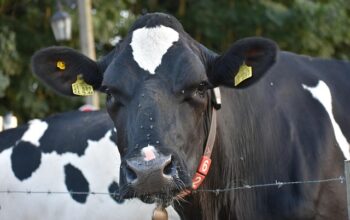In Ontario's agricultural sector, efficient farm fencing is vital, with traditional methods yielding low productivity. Automatic farm gates emerge as a game-changer, offering remote control, monitoring, and advanced security features. These smart solutions replace labor-intensive maintenance, reduce costs, and enhance safety for livestock, crops, and equipment, aligning with the growing demand from Ontario's farming community. From electric to solar-powered and app-controlled models, these systems ensure robust functionality, customization, and ease of use. Implementing automatic farm gates involves assessing needs, strategic planning, installation, programming, and regular maintenance for optimal efficiency.
Ontario farms are embracing innovation with automatic farm gates, revolutionizing convenience and efficiency in farm fencing. This article delves into the growing need for streamlined access control on Ontario’s diverse agricultural landscape. We explore the benefits of automated systems, from improved safety to enhanced productivity.
Learn about various types of automatic gate technologies and discover a step-by-step guide to implementation, empowering farmers to navigate the process seamlessly. Discover how these advancements are transforming farm management.
- Understanding the Need for Efficient Farm Fencing in Ontario
- The Benefits of Automatic Farm Gates
- Types and Technologies of Automatic Gate Systems
- Implementing Automatic Farm Gates: A Step-by-Step Guide
Understanding the Need for Efficient Farm Fencing in Ontario
In Ontario, efficient farm fencing is more than just a practical necessity; it’s a key enabler for modern farming practices. With vast agricultural lands spanning diverse landscapes, farmers face unique challenges in managing livestock and ensuring their safety while facilitating easy access for machinery and workers. Traditional methods of farm fencing can be labor-intensive and time-consuming, hindering productivity. This is where automatic farm gates come into play as a revolutionary solution.
The demand for convenient, efficient farm fencing solutions is growing as Ontario’s farming community recognizes the potential of automated systems. These gates offer unparalleled convenience by eliminating the need for manual operation, reducing labor costs, and enhancing overall farm management. By integrating smart technology, farmers can remotely control and monitor access points, ensuring the security and well-being of their livestock while streamlining daily operations.
The Benefits of Automatic Farm Gates
Automatic farm gates offer a plethora of benefits for Ontario farms, revolutionizing the way farmers manage their property and enhancing overall convenience. One of the key advantages is the improvement in farm fencing infrastructure. Traditional fence maintenance can be labor-intensive, time-consuming, and costly. Automatic gates, however, streamline this process by eliminating the need for manual operation, reducing wear and tear, and minimizing repairs. This not only saves farmers’ time but also contributes to cost savings in the long run.
Moreover, automatic farm gates enhance safety and security. They can be equipped with advanced features such as sensors and remote controls, ensuring that only authorized personnel gain access to the farm. This is particularly beneficial for large properties where monitoring every entry point is challenging. By installing these gates, farmers can better protect their livestock, crops, and equipment, fostering a secure environment for their operations.
Types and Technologies of Automatic Gate Systems
Automatic farm gates are a modern convenience for Ontario farmers, offering enhanced safety and efficiency in managing livestock and vehicle access to fields and buildings. These systems range from simple, single-gate operations to complex networks spanning multiple entries. Types of automatic gate systems include electric, solar-powered, and app-controlled models. Electric gates, the most common, rely on power from a farm’s electrical system, often with backup batteries for overnight or power outage scenarios. Solar-powered options are increasingly popular, utilizing energy from the sun to operate, making them eco-friendly choices for environmentally conscious farmers.
App-controlled automatic gates allow remote operation via smartphone or tablet, providing farmers with the convenience of opening and closing gates from anywhere on their property. These technologies integrate seamlessly into modern farming practices, replacing traditional manual operations and enhancing overall efficiency. Advanced features like motion sensors, weatherproof designs, and customizable access codes further ensure robust functionality and security for farm fencing systems.
Implementing Automatic Farm Gates: A Step-by-Step Guide
Implementing Automatic Farm Gates is a straightforward process that offers numerous benefits for Ontario farmers. First, assess your farm’s needs and select an automatic gate system suitable for your property size and type. Look for models with adjustable height and width to accommodate various vehicle sizes. Next, plan the placement of the gates, considering traffic flow and entry points. Ensure proper clearance and install any necessary support structures.
Once planning is complete, it’s time to set up the farm fencing. This involves attaching the gate posts to the existing fence line or installing new posts if required. Connect the electric operator according to the manufacturer’s instructions, ensuring safe and secure wiring. Program the remote controls or sensors to activate the gates automatically when needed. Regular maintenance, including cleaning and checks on moving parts, will ensure your automatic farm gates function optimally for years to come.
Automatic farm gates offer a modern solution for farmers in Ontario seeking increased convenience and efficiency in managing their property. By implementing these advanced systems, farmers can streamline activities such as livestock control and vehicle access, enhancing overall farm management. This technology not only improves daily operations but also contributes to the sustainability and productivity of Ontario’s agricultural sector by optimising farm fencing.




